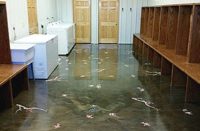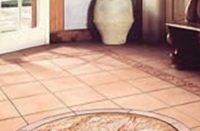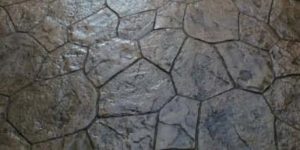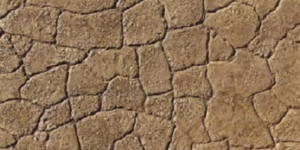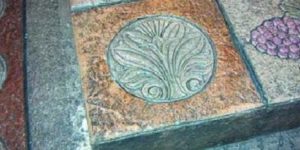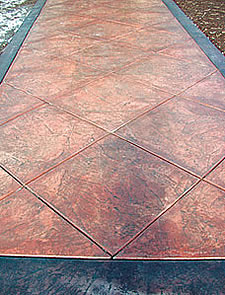
Many colorful changes have occurred since the early 1900s when Henry Ford boldly stated: “People can have the Model T in any color — as long as it’s black”. From cars to concrete, applications of color have burst into the 21st century limelight and vivid hues are everywhere. In the cementitious world, creative contractors should prepare to leave their one-color concrete notions behind. So they can make way for jobs that feature coats of many colors.
There are many different methods to give stamp concrete a multicolored look. Including liquid and powdered release agents, color hardeners, colored sealers and acid stains.
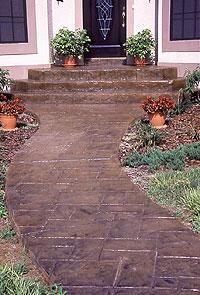
Popular Combo is Tried and True
According to Debbie Bliss, technical information coordinator for Brickform Rafco Products in Rancho Cucamonga, Calif., the easiest way to color stamped concrete is to use a color hardener and a color release prior to stamping. “The hardener makes the color denser and more abrasion resistant. If you want to bring out the detail, go with a darker release.”
Germania Hernandez, sales manager for SuperStone in Miami, agrees this combination consistently produces realistic-looking surfaces. “Terra cotta, brick red and buff color hardeners are the most popular colors here in the South, with a brown stone, dark brown and charcoal release,” she notes. “The silver, French gray, sun gray color hardeners with charcoal, gray and slate releases are very popular in the North.”
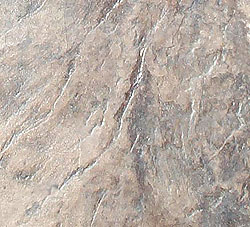
Bob Harris, the director of product training at Scofield Institute in Douglasville, Ga. He has done plenty of work for Disney, and swears by dry shake color hardener. When the job calls for a very abrasion-resistant hard-wear surface. “You’ll get much better wear in the long run,” he says.
Working with Color Hardeners
If you underapply color hardeners, “You’re going to get spotting, areas where dark colors show through,” says Frank Rusk of Frank Rusk Consulting in Las Vegas. If you overapply, “you’re going to have an extremely hard time working in the color hardener. It’ll become a big clump and will keep ripping apart.”
He suggests mixing two or more powder releases in varying percentages. “This will leave your competition baffled and enable you to match project features others might not be able to achieve,” he says. A color he likes, for example, is created by combining like amounts of Venetian pink with Stedman buff (a golden yellow) to create a warm peach. “Don’t be afraid to experiment,” he says. “You can mix a lot of colors yourself before you have to special order.”

Quality is Key
Rusk says to avoid a scummy looking coloring job you must wash away any remaining color release. When the surface is dry, sweep off the heavy powder, and scrub the surface with a slight acid mixture. Then pressure wash. Next, apply trisodium phosphate and wash that off. When it’s completely dry, seal the surface. “This will give you an authentic 3-D look,” Rusk maintains.
Most contractors broadcast a color hardener and a color release agent to produce a two-tone color in the grout joints and within the pattern’s texture, says Jeff Hartzog, international sales manager of Specialty Concrete Products Inc. in West Columbia, S.C. “After the release agent is washed off, you have a few options on how to make the stones different colors.”
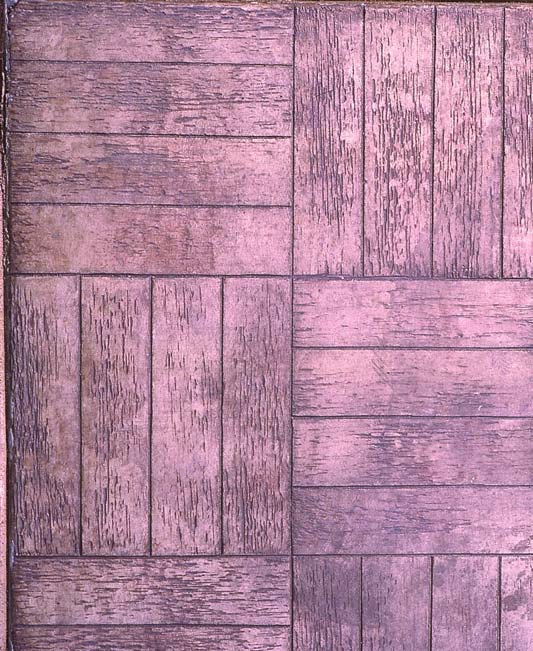
Leave No Stone Uncolored
One of Specialty Concrete’s most popular products is called Stone-Shade, a mixture of sealers, pigments and release agents. Available in 17 colors, “It can be sprayed, rolled or brushed onto individual stones to achieve the coloring effects of powder-release agents,” Hartzog says. “It’s not opaque; it lets the color beneath show through while still producing darker highlights.” It’s a quick, easy and economical way to add additional colors to stamped concrete. Additionally, it is commonly used to renovate old worn-out stamped surfaces.
Another way to add color is to sift a color hardener through pantyhose. Thi separates the sand from the pigment and cement. Throw away the sand and mix the colored powder with water to make a flour-like paste. After you’ve power washed off the release agent, paint the paste onto random stones in the direction of the grain of the pattern you want to highlight. “Then mist with water and let the paste settle in the texture lines and grooves for a more natural look,” Hartzog says. “When you seal it, the sealer will really bring out the pigments.”
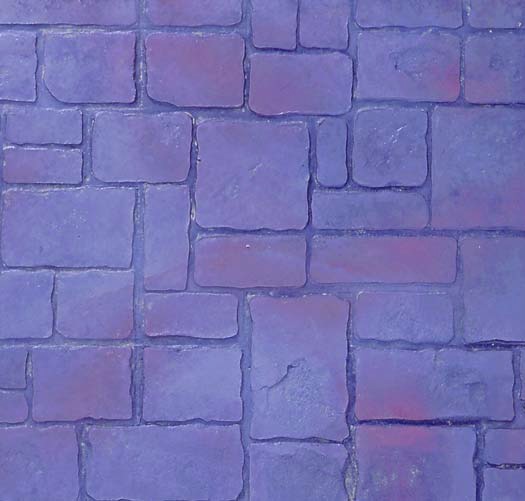
Innovation and Improvement
Gerry Sadleir, vice president of operations for San Diego-based Concrete Solutions Inc. — the company that introduced its 1/4-inch overlay stamping system in 1997 — recommends using a mixture of stamped concrete sealer and liquid release agent combined with liquid and powdered antiquing colors to create beautiful and natural coloring effects.
One such method involves spraying a transparent colored liquid over a textured stamped surface and then applying a stamped concrete sealer. The colored liquid puddles in the low areas, where the concentrated color appears darker. While the base color shows through on the high areas producing a natural antiquing effect. If you want to antique individual stones different colors, brush on the same colored liquid in a circular or side-to-side motion. Both the concentration of the liquid and the way it’s applied (spraying, brushing or both) will determine the final result, Sadleir notes.
When coloring and stamping, Rusk suggests using a 50/50 three-quarter aggregate stamp mix that is fly-ash free. “Fly ash slows concrete down but tends to bead up in black spots causing you to use more color hardener,” Rusk says.
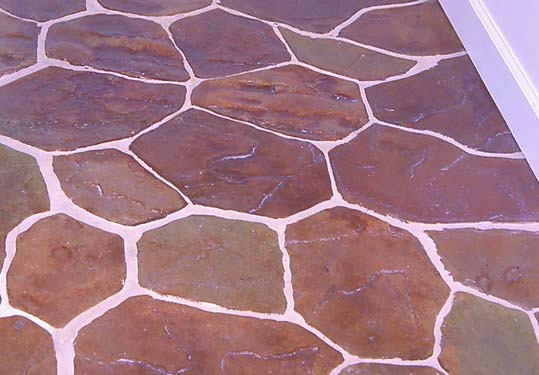
Breaking the Molds
Ken Freestone, director of technical engineering for Elite Crete Systems Inc. in Valparaiso, Ind., says some people are getting away from mixing a color hardener with a powder release. Due to it being so time consuming and not very practical for interior jobs. Instead, they’re turning to acid stains or styrenated acrylic for extra color.
“Styrene blended with acrylic increases water resistance and produces more of a permanent solution vs. a coating,” says Freestone. “With acid staining, you can get coloring on stamped surfaces within 24 hours vs. waiting a few days. It dries very fast and you don’t have to allow three to four days for the moisture to evaporate.”
For a very mottled, realistic look, Freestone says you can first put down a reactive acid stain. Then a antiquing acrylic to get various shades of high and low color.
Chemical Stains
“The drawback to chemical stains is that instead of covering an imperfection sometimes the stain will accentuate it,” like effervescence or a stamp that is off kilter, says Charles Leland, general manager of SureCrete Design Products in Dade City, Fla. “Other times the results are killer.”
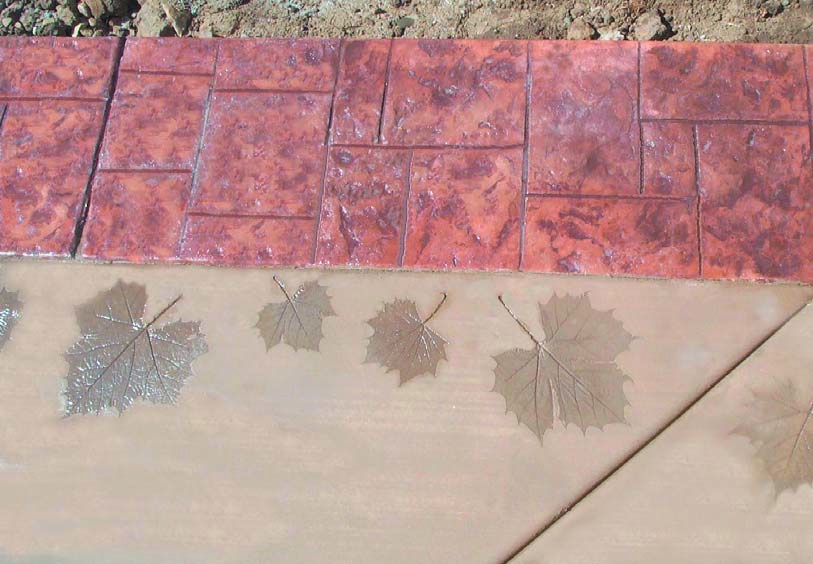
Acid stains will produce a mottled look that is somewhat unpredictable. Because it depends upon a chemical reaction, you never know exactly what to expect. “But the sweet thing about working with overlays and acid stains is that ordinarily you’ll get much more consistent results than with freshly poured concrete,” Leland says. With the thinner overlay material, “the results of the acid stain will be more consistent because we control what’s in the bag.”
Staying within the Lines
Leland also agrees that powder releases are messy. With his company’s overlay system, a contractor puts down about 1/4-inch integrally colored cementitious material created from a choice of 30 different colors. On top of
that, most contractors spray a darker contrasting color. “Antiquing produces a more realistic stone look and does a nice job of hiding imperfections. It’s like love; it covers a multitude of sins.” Without the antiquing, most surfaces look “too plastic,” he says.
“If you’re willing to experiment, there are lots of artistic and fun things to do,” says Bliss. “You can use multiple color stains and hardeners for very colorful results.”
Using Cem-Coat
If you’re looking for an easier route, Bliss suggests Brickform’s Cem-Coat. It is a self-priming cementitious coating that bonds with existing or cured new interior or exterior concrete surfaces. This tough water based coating goes on like paint but the similarity stops there. For existing stamped concrete, you can dilute Cem-Coat and spray it on to bring out the relief.
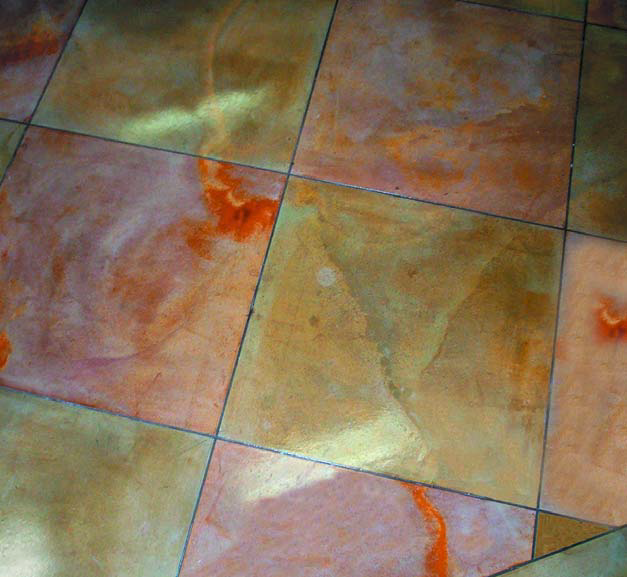
“This opaque coating comes in any color you can imagine,” Bliss says, and it has a gamut of uses. It can be used to antique a textured surface, touch up colored concrete or cover the whole shooting match. “If you have an old section of driveway and you’re putting down a new addition, Cem-Coat is the perfect product to give the whole surface one uniform color.”
A clean sweep
Before you start an actual job, consider basic color schemes. “I use a color wheel all the time,” says Lee Levig, owner of Concrete Works in the San Francisco Bay area, to determine colors for selections ranging from monochromatic and split complementary to complementary and analogous. “Schemes that work for interior designers work for concrete, too. Color is all about emotions and issuing the right emotion for the job.”
Another interesting technique Levig uses on stamped squares involves a monochromatic scheme. Where the broom direction is different on adjoining squares. “You brush one width-wise and the next length-wise. In the morning when the sun comes up the squares look like a different color than at high noon and when the sun sets,” he says. Although the surface is one color, you get a checkerboard effect from the changing shadows throughout the day. If you use a mottled multicolor scheme with this technique, sunlight and shadows will draw out different colors throughout the day. “The colors will change,” Levig says, “almost like a hologram.”
